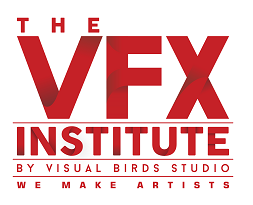The Impact of VFX on Bollywood Cinema
The Indian film industry, with Bollywood at its epicenter, has been a vibrant and dynamic force in global cinema. Over the past decade, a significant evolution has taken root in the heart of this industry – the rise of Visual Effects (VFX). This transformation marks not just a technological advancement but a revolutionary shift in storytelling, aesthetics, and the entire cinematic experience.
The Emergence of VFX in Bollywood Historically, Indian cinema heavily relied on storylines, music, and star power. However, as global cinema raised the bar in film-making standards, Bollywood too began exploring the potential of VFX. The change was gradual but undeniable. Initially used for basic enhancements and corrections, VFX in Bollywood has now become a pivotal element in film production, enabling filmmakers to push the boundaries of creativity and realism.
VFX: A Game-Changer for Storytelling The real game-changer came with movies like ‘Baahubali’ and ‘2.0’, where VFX was not just a tool but a storytelling character in itself. These films showcased a level of visual grandeur that was previously unattainable, changing audience expectations and setting new benchmarks for filmmakers. The use of VFX opened up new possibilities in narrative techniques, allowing stories to be told in a more visually engaging and immersive manner. Films that once seemed impossible to make due to logistical and physical constraints are now feasible, thanks to VFX technologies.
VFX Education and Industry Demand This surge in the use of VFX has created a parallel demand for skilled professionals in the field. Institutes like The
VFX Institute in Mumbai have become crucial in bridging this skill gap. We provide comprehensive training in various VFX softwares and techniques, ensuring that our students are industry-ready. Our curriculum is designed to be in sync with current industry standards, covering everything from basic visual effects in Adobe Photoshop to complex compositing in Nuke.
Real-World Applications in Bollywood In recent times, we have seen Bollywood movies where VFX played a central role in the narrative. Films like ‘Brahmastra’ and ‘War’ have demonstrated sophisticated use of visual effects to create stunning action sequences and otherworldly landscapes. This trend indicates a growing reliance on VFX studios and professionals, signifying a bright future for those trained in this field.
The Impact on Careers in VFX As a result, career opportunities in VFX are on the rise. From being a niche skill, VFX has become a mainstream career option with diverse roles like VFX artist, animator, matte painter, compositing artist, and many more emerging. Our courses at The VFX Institute are tailored to prepare students for these varied roles, focusing on both technical proficiency and creative expression.
Challenges and Future Prospects However, the integration of VFX in Bollywood is not without its challenges. One of the key issues is the balance between storytelling and visual spectacle. While VFX enables filmmakers to visualize the unimaginable, it also brings the challenge of not letting technology overshadow the narrative.
Looking ahead, the future of VFX in Bollywood is undeniably bright. With advancements in technology and an increasing number of filmmakers embracing VFX, the scope for innovation is limitless. The VFX Institute is committed to nurturing the next generation of VFX professionals, equipping them with the skills needed to excel in this evolving landscape.
In conclusion, the rise of VFX in Bollywood signifies a new era of film-making where technology and creativity merge to create unprecedented cinematic experiences. It’s a realm where imagination meets reality, and the only limit is the sky. For aspiring artists and professionals, this is an exciting time to be part of the VFX industry. With the right training and skills, provided by institutes like The VFX Institute in Mumbai, individuals can look forward to being part of this vibrant and ever-evolving field. The fusion of VFX in Bollywood’s narrative fabric is not just an enhancement but a revolution, redefining what Indian cinema can achieve and where it can go from here.

